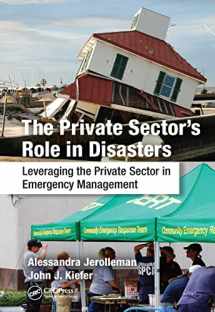
The Private Sector's Role in Disasters: Leveraging the Private Sector in Emergency Management
Book details
Summary
Description
This book examines the role of the private sector in emergency management and how that role is changing through private sector intersections with government, government agencies, and the public sectors in all phases of emergency management. It particularly focuses on the areas in which government regulations and guidelines promote or encourage private sector involvement, and looks at best practices for public–private partnerships as well as some of the common pitfalls of the contracting model.
The private sector now plays a tremendous role in the creation of policies related to emergency management and their implementation at the federal, state, and local levels. The Private Sector’s Role in Disasters: Leveraging the Private Sector in Emergency Management explores some of the challenges of implementing policies in the current contracting model. It also compares emergency management to other government services that have been privatized. Case studies of recent disasters and examples of the privatization of some emergency management functions are presented to illustrate how to better plan for private sector involvement in future disasters.
Given the sometimes dysfunctional relationships that have emerged from public–private partnerships in disaster situations, it is important to analyze and improve principles and practices to work toward more effective partnership. This book provides thoughtful guidelines, recommendations, and best-practice approaches to public–private development, implementation, and collaboration throughout the disaster cycle. It gives focused directions for cultivating public–private working relationships to make emergency responses quicker and assistance more effective.


We would LOVE it if you could help us and other readers by reviewing the book
Book review



